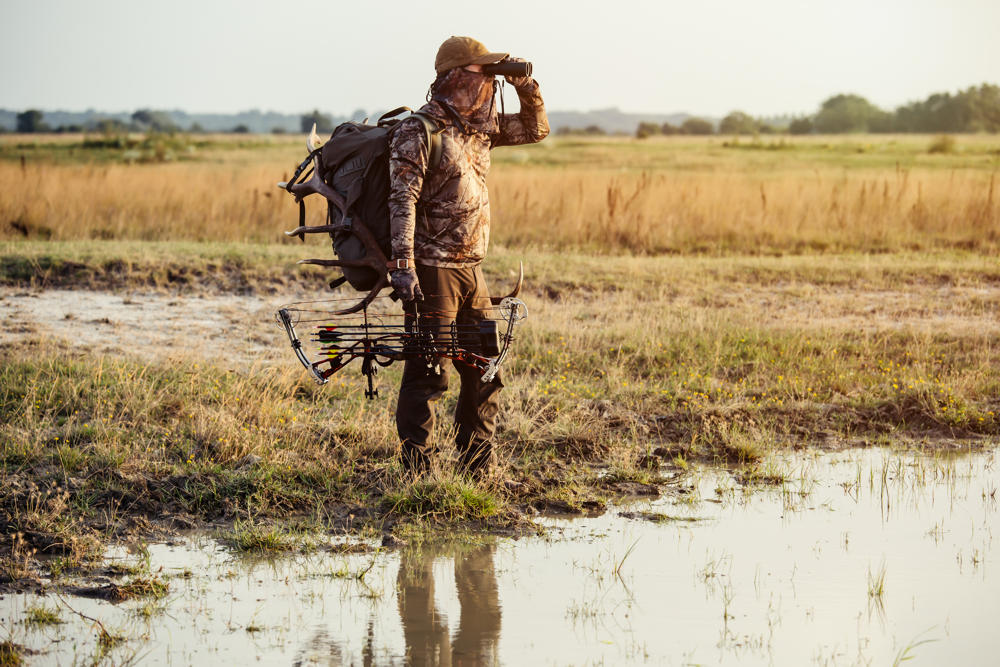Establishing a base camp for extended hunting expeditions demands meticulous preparation and implementation, focusing on the safety and comfort. This process involves selecting a strategic location, constructing robust shelters, securing a reliable water source, and organizing supplies efficiently. Such thoroughness is essential for a successful and sustainable wilderness experience, blending security and practicality of long-term outdoor living.
This guide outlines the essential steps and considerations for establishing a durable and efficient base camp.
1. Choose The Right Location
Selecting the ideal spot for a base camp is a foundational step that requires strategic consideration. The chosen location must serve as a bastion against the unpredictable forces of nature, providing a haven from harsh weather conditions. For instance, reliable water sources are indispensable for hydration, cooking, and hygiene. Thus, proximity to rivers, lakes, or streams is highly beneficial.
The camp’s proximity to abundant hunting grounds is equally important to abundant hunting grounds to enable efficient excursions without straying too far from the safety and resources of the base. Elevation is also key in avoiding areas prone to flooding, ensuring the camp remains dry and accessible.
Furthermore, awareness of the surrounding terrain is essential to avoid areas with increased risks, such as avalanche paths or zones susceptible to rockfalls. Wind direction plays a critical role in wildlife detection; positioning the camp downwind from hunting areas minimizes human scent dispersion, preserving the element of surprise and increasing hunting success.
2. Establish Shelter
Securing a robust and reliable shelter is paramount for the well-being and morale of those stationed at a base camp for extended durations. The unpredictability and harshness of wilderness conditions requires a haven that provides refuge and a degree of comfort and safety.
In this regard, a military shelter is an ideal solution, embodying the strength and resilience required to withstand adverse weather and environmental challenges. These structures are engineered with precision, utilizing materials and designs that offer superior protection against wind, rain, snow, and extreme temperatures.
Beyond mere durability, these shelters are equipped with features that enhance the camp environment’s livability and security, catering to its inhabitants’ psychological and physical health. The strategic incorporation of ventilation systems, insulation, and space optimization ensures that these shelters aren’t just survival capsules but homes away from home.
3. Organize The Camp Layout
A strategic camp layout is crucial for ensuring the camp’s overall functionality and the safety of its occupants. One can create an organized and efficient living space by designating specific zones for sleeping, cooking, dining, storage, and waste disposal. The cooking area, placed downwind of the sleeping quarters, minimizes the risk of attracting wildlife with food odors.
Storage zones should be systematically arranged and elevated to safeguard provisions from animals and adverse weather, maintaining a clean, orderly, and secure camp environment conducive to a successful and safe hunting experience.
4. Set Up A Water Supply
Securing a reliable water supply is paramount in any extended outdoor endeavor. The initial task involves locating a water source, such as a stream or lake, near the camp. In situations where natural water sources aren’t readily accessible, implementing a rainwater collection and storage system becomes a practical solution.
Ensuring the safety and potability of the water is essential; thus, all water intended for consumption must undergo purification processes such as boiling, chemical treatment, or filtration. These measures are critical for preventing waterborne illnesses and maintaining the health and well-being of the camp inhabitants.

5. Invest In Food Storage And Management
Effective food storage practices are vital for minimizing wildlife encounters at the campsite. Utilizing airtight containers and, in areas frequented by bears, bear-proof canisters or lockers are advisable to prevent attracting animals.
Suspended food storage systems, positioned between trees and elevated at least 10 feet above the ground, further safeguard food supplies from wildlife. This method protects the camp’s provisions and contributes to a safer and more harmonious coexistence with the surrounding wildlife, ensuring a disturbance-free hunting experience.
6. Create A Fire Management Plan
Implementing a comprehensive fire management plan is essential for ensuring warmth, enabling cooking, and boosting camp morale. This involves setting up a designated fire pit encircled by rocks or a metal barrier at a safe distance from combustible materials. It’s crucial to have fire extinguishing tools, such as water or a fire extinguisher, readily available to address potential emergencies swiftly. Compliance with local fire regulations and a heightened awareness of forest fire risks underscore the importance of responsible fire management within the camp setting.
7. Ensure Proper Waste Management
Effective waste management is pivotal for preserving the natural environment and maintaining campsite hygiene. Establishing latrine facilities, a significant distance from water sources and living areas minimizes contamination risks. The use of environmentally friendly, biodegradable soaps for personal and utensil washing further reduces the ecological impact.
Ensuring that all waste, whether human or from daily activities, is either thoroughly buried or taken with when departing the campsite, reflects a commitment to environmental stewardship and cleanliness.
8. Consider Safety And Emergency Preparedness
Prioritizing safety and emergency preparedness is fundamental in any hunting camp. A well-supplied first-aid kit, along with a thorough understanding of basic first aid among all participants, forms the cornerstone of camp safety. Developing clear communication strategies and emergency response plans, including established evacuation routes and distress signals, is essential. In remote locations devoid of cell service, carrying a satellite phone or an emergency beacon is a prudent measure to enhance safety and ensure help can be summoned if necessary.
9. Maintain Camp Hygiene
Upholding stringent hygiene standards within the camp is crucial for preventing the onset of diseases. This entails the regular sanitization of food preparation and consumption areas, coupled with diligent handwashing practices, particularly before meals and after handling games. A disciplined approach to personal and communal cleanliness acts as a deterrent against the spread of infectious agents, contributing to a healthier camp environment conducive to the well-being of all occupants.
10. Adopt Sustainable Hunting Practices
Adhering to sustainable and ethical hunting practices is essential for the conservation of wildlife and their habitats. This includes complying with local hunting laws, observing season dates, and respecting bag limits to ensure that hunting activities don’t detrimentally impact the ecosystem. The overarching goal is to minimize the environmental footprint left behind, demonstrating respect for nature and promoting the preservation of biodiversity for future generations.
Takeaway
Setting up a base camp for long-term hunts is a complex but rewarding endeavor that requires careful planning, teamwork, and respect for nature. By following these guidelines, hunters can ensure a safe, efficient, and enjoyable base camp experience that maximizes their hunting success while minimizing their impact on the environment.

